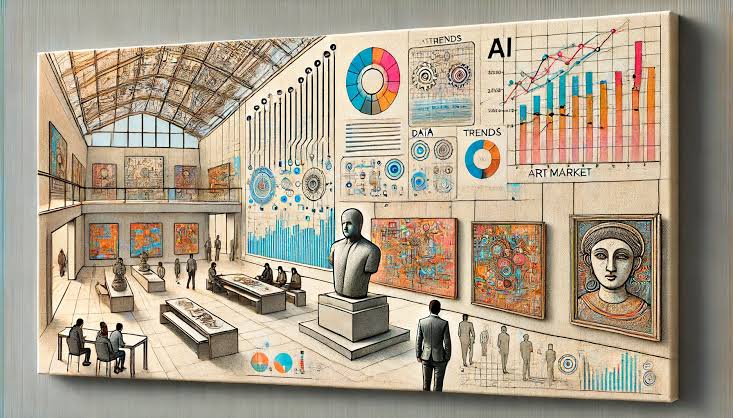AI is not only altering how art is made but also reshaping the economic landscape of the art world. From creating new categories of collectible works to offering advanced market analysis tools, AI is both an opportunity and a disruption for artists,
Artificial intelligence is reshaping the art world in ways that extend beyond creative production. While AI-generated artworks have gained significant attention for their originality and technological innovation, their influence is also being felt in how the art market operates and how investors approach art as an asset. From pricing models to accessibility, AI is transforming market dynamics, challenging traditional practices, and introducing new investment opportunities.
AI-Generated Art as a Market Category
Over the past few years, AI-generated art has moved from novelty status to a recognized segment of the art market. Pieces created with algorithms, neural networks, and machine learning tools have been sold at major auction houses, sometimes fetching six-figure sums. This shift has expanded the definition of art, attracting collectors who are interested not just in the aesthetic value of a piece but in its technological significance. The novelty and exclusivity of early AI art have helped drive high valuations, though the market remains relatively young and volatile.
Changing Patterns in Art Valuation
AI is influencing art valuation in two main ways. First, AI-generated art challenges traditional pricing criteria, which often rely on an artist’s reputation, craftsmanship, and historical significance. With AI, the role of the human artist is sometimes minimal, and buyers must assess the value based on concept, algorithm design, and uniqueness of the output. Second, AI tools are now being used to predict market trends and price ranges for both traditional and digital artworks. Machine learning models analyze historical auction results, artist performance, and market sentiment to provide more data-driven investment insights.
Democratization of Art Creation and Access
The accessibility of AI art tools has lowered entry barriers for artists, leading to a surge in new creators. Platforms like DALL·E, Midjourney, and Stable Diffusion allow anyone to produce high-quality artworks with minimal technical skill, broadening the diversity of voices in the market. This democratization can increase competition for attention but also expand the buyer base, as more people feel connected to emerging digital artists. From an investment perspective, this trend could mean more frequent market disruptions and shorter hype cycles for certain styles.
NFTs and AI Art Investment
The intersection of AI art and blockchain technology has created a new investment niche through non-fungible tokens (NFTs). NFTs provide verifiable ownership of digital artworks, including those made with AI. This has enabled artists to monetize their work directly, and collectors to trade AI art with transparency and security. However, the volatility of the NFT market and ongoing debates about copyright and originality make it a high-risk but potentially high-reward segment for investors.
Shifts in Collector Preferences
Collectors are increasingly drawn to hybrid works that combine AI with traditional media, appreciating the fusion of human creativity and machine capability. Younger collectors, in particular, see AI art as a reflection of the digital era, making it both a cultural and technological investment. At the same time, some traditionalists remain skeptical about AI art’s long-term value, questioning whether it can achieve the same historical significance as works created entirely by human hands.
Market Predictions and Risk Factors
AI-powered analytics are becoming a staple for galleries, auction houses, and investors seeking to forecast market movements. These tools can identify emerging artists, spot undervalued works, and predict demand trends across various segments. However, the AI art market carries risks, including legal uncertainties over authorship, rapid shifts in technology that may render current methods obsolete, and the possibility of market oversaturation.
The Role of AI in Art Authentication
Beyond creation and sales, AI is playing a role in authentication and provenance verification. Advanced image recognition and pattern analysis can help detect forgeries and confirm the legitimacy of physical and digital artworks. This is particularly important for investor confidence, as provenance issues have historically undermined art market stability.
The Future of AI in Art Investment
As AI becomes more sophisticated, it is likely that the art market will see further integration between creative algorithms, data analytics, and investment strategies. This could lead to more transparent pricing models, increased accessibility for new collectors, and entirely new forms of artistic expression that challenge existing market norms. For investors, the key will be balancing the excitement of technological innovation with a careful assessment of long-term value and market stability.
